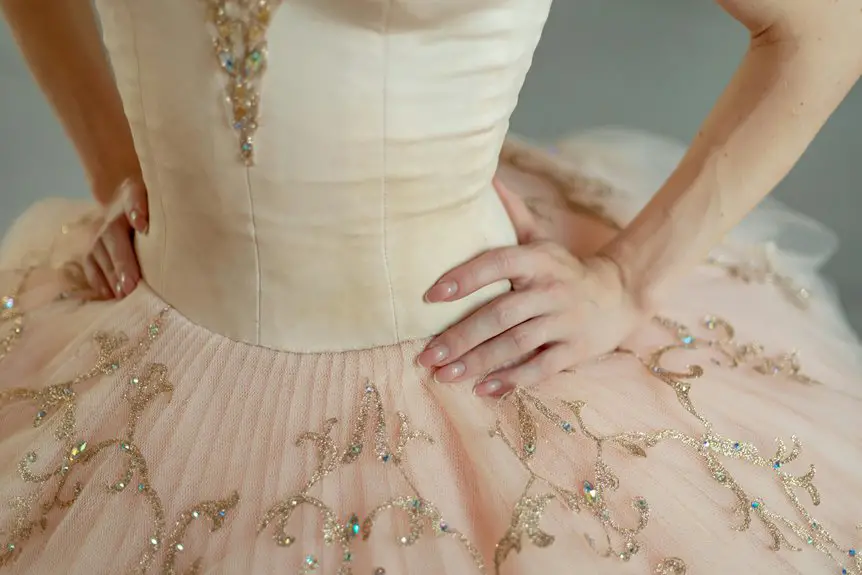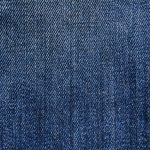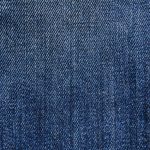Scuba dress fabric is a smooth, stretchy material made from polyester or nylon blended with spandex, giving you a soft yet structured feel. It’s inspired by neoprene wetsuits but designed for everyday fashion, offering a flattering fit that holds its shape and resists wrinkles. You’ll appreciate its durability and vibrant colors, plus easy care. If you want to know how it’s made, why designers love it, and how to keep your scuba pieces looking great, there’s more to discover.
Table of Contents
Key Takeaways
- Scuba dress fabric is a thick, double-knit textile made from polyester or nylon blended with spandex for stretch and shape retention.
- It has a smooth, soft texture with a structured form that sculpts the silhouette without restricting movement.
- The fabric traps air between layers, providing cushioning and warmth without bulk.
- Scuba fabric is wrinkle-resistant, durable, and holds vibrant colors, making it ideal for stylish, everyday wear.
- Originating from neoprene used in wetsuits, it evolved into a fashionable, versatile material for dresses and other garments.
Origins and History of Scuba Fabric
Although many people associate scuba fabric with modern fashion, its origins trace back to the development of neoprene in the 1930s, which was initially designed for wetsuits.
When you explore its history, you’ll see how scuba fabric evolved from this practical use to become a stylish textile. Originally, neoprene provided insulation and flexibility for divers, but designers soon recognized its potential for clothing.
Scuba fabric transformed from practical dive gear to a stylish, versatile textile embraced by fashion designers.
By the late 20th century, scuba fabric shifted into fashion, prized for its smooth texture and structured form. As you wear garments made from scuba fabric today, you’re part of a story that spans decades—from functional dive gear to chic, contemporary apparel.
Understanding this evolution helps you appreciate why scuba fabric feels both innovative and timeless.
Composition and Material Properties
Since scuba fabric originated from neoprene, its composition combines synthetic materials that give it unique properties. You’ll find it mainly made from polyester or nylon blended with spandex, which provides stretch and durability.
This combination makes scuba fabric feel smooth yet structured, perfect for form-fitting dresses.
When you wear scuba fabric, you’ll appreciate its:
- Comfortable stretch that moves with you without losing shape
- Soft, smooth texture that feels luxurious against your skin
- Resilience that resists wrinkles and holds vibrant colors
These material properties guarantee your scuba dress not only looks stylish but also stands up to daily wear, making it an excellent choice for both casual and formal occasions.
How Scuba Fabric Is Manufactured
Creating scuba fabric involves a careful process that blends synthetic fibers with a special knitting technique to achieve its signature thickness and stretch.
You start with polyester and spandex fibers, which are combined to give the fabric its elasticity and durability. These fibers are then knitted using a double-knit method, producing a smooth surface on both sides.
This technique traps air between the layers, contributing to the fabric’s thickness and slight cushioning effect. After knitting, the fabric undergoes heat setting to stabilize its shape and enhance its strength.
Finally, it’s dyed and finished to guarantee colorfastness and a soft hand feel. By controlling each manufacturing step, you get scuba fabric that’s perfect for structured, comfortable garments like dresses.
Key Characteristics of Scuba Dress Fabric
You’ll notice scuba dress fabric has a smooth texture and a substantial thickness that gives it shape.
It stretches easily, offering flexibility without losing form.
Plus, its durability and moderate weight make it perfect for lasting wear.
Texture and Thickness
Though scuba dress fabric looks smooth and sleek on the surface, its texture offers a unique blend of softness and slight firmness that sets it apart from other materials.
When you touch it, you’ll notice a gentle cushiony feel that’s both comfortable and structured. The thickness adds weight without feeling bulky, giving your dress a polished, high-quality appearance.
This balance makes the fabric feel luxurious while maintaining shape and form.
You’ll love how scuba fabric:
- Feels plush against your skin, enhancing comfort
- Holds its structure, flattering your silhouette
- Provides warmth without heavy layering
This combination of texture and thickness guarantees your scuba dress looks refined and feels just right, no matter the occasion.
Stretch and Flexibility
Because scuba dress fabric combines firmness with elasticity, it moves with you without losing its shape. You’ll notice it stretches comfortably when you bend or sit, yet snaps back smoothly, maintaining a sleek silhouette. This balance lets you stay stylish and comfortable, whether at a party or on the go.
Here’s a quick look at how scuba fabric’s stretch compares to other materials:
| Fabric Type | Stretch Level |
|---|---|
| Scuba Fabric | Moderate & resilient |
| Cotton Blend | Light, less recovery |
| Spandex Blend | High, very flexible |
With scuba, you get enough give for ease without the bagginess that some stretchy fabrics develop over time.
Durability and Weight
While scuba dress fabric feels light and smooth against your skin, it packs impressive durability that stands up to regular wear. You’ll appreciate how this fabric resists wrinkles, snags, and fading, making your dress look fresh longer.
Despite its sturdy nature, it doesn’t weigh you down, offering a comfortable feel all day. The balance of strength and lightness means your dress moves with you effortlessly, perfect for any occasion.
Here’s why you’ll love its durability and weight:
- Long-lasting wear without sacrificing softness
- Lightweight comfort that won’t drag you down
- Resists common damage like pilling and tears
With scuba fabric, you get a blend of reliability and ease that keeps you looking sharp and feeling great.
Differences Between Scuba and Neoprene
When you compare scuba and neoprene fabrics, you’ll notice that both offer excellent stretch and durability, but they serve different purposes and have distinct characteristics.
Neoprene is a thicker, rubber-based material primarily used in wetsuits for insulation and water resistance. It feels heavier and less flexible compared to scuba fabric.
Scuba, on the other hand, is a lighter, double-knit polyester and spandex blend designed for fashion and comfort. It mimics neoprene’s smooth surface but is softer, more breathable, and easier to sew.
While neoprene focuses on performance in water sports, scuba fabric prioritizes aesthetics and wearability in everyday clothing.
Advantages of Using Scuba Fabric in Fashion
If you’re looking for a fabric that combines style and practicality, scuba fabric offers several advantages that make it a favorite in fashion.
You’ll appreciate how its smooth texture and structured form effortlessly elevate your look, while also providing comfort and durability.
Here’s why scuba fabric stands out:
- Flattering Fit: Its thick yet flexible nature sculpts your silhouette beautifully without restricting movement.
- Wrinkle Resistance: You can wear it all day and still look polished, no matter where you go.
- Easy Care: Scuba fabric resists stains and holds up well in the wash, saving you time and effort.
Popular Styles and Designs Made With Scuba Fabric
Scuba fabric’s unique blend of structure and stretch has inspired a variety of popular styles and designs that suit different occasions. When you wear a scuba dress, you’ll notice how its smooth surface and slight sheen create a polished look, perfect for both casual outings and formal events.
You can find scuba fabric in fit-and-flare dresses, bodycon silhouettes, and even peplum tops that highlight your shape without sacrificing comfort. Its thickness allows designers to experiment with bold color blocking, geometric patterns, and sculptural details like ruffles or pleats.
If you want something versatile, a scuba pencil skirt or jacket offers a sleek, modern edge. Whether you’re dressing up or down, scuba fabric gives your outfit structure and style that stands out effortlessly.
Care and Maintenance Tips for Scuba Garments
To keep your scuba garments looking fresh, you’ll want to follow specific washing instructions that prevent damage.
Always use cold water and avoid harsh detergents to maintain the fabric’s integrity.
When storing, hang your pieces in a cool, dry place to preserve their shape and texture.
Washing Instructions
Although scuba fabric is durable, you’ll want to handle it with care during washing to maintain its shape and texture.
Avoid harsh treatments that can damage the fabric’s smooth surface. Follow these washing tips to keep your scuba garments looking fresh:
- Use cold water and a gentle cycle to prevent shrinking and fabric distortion.
- Skip bleach and fabric softeners since they can break down the material’s fibers.
- Turn your garment inside out to protect the outer layer from friction and fading.
Storage Recommendations
Proper washing sets the foundation for preserving your garment’s quality, but how you store it also plays a big role in maintaining its shape and texture.
When you’re putting your scuba dress away, avoid hanging it on thin or wire hangers, which can cause stretching or shoulder bumps. Instead, use padded or wide hangers to support the fabric evenly.
If space is tight, folding your scuba dress carefully helps prevent unwanted creases and deformation. Store it in a cool, dry place away from direct sunlight to avoid fading or fabric breakdown.
Also, keep your garment away from sharp objects or rough surfaces that could snag the smooth texture. Following these storage tips will help your scuba dress look fresh and last longer.
Sustainability and Environmental Impact of Scuba Fabric
When you consider the sustainability of scuba fabric, it’s important to recognize both its synthetic origins and the environmental challenges associated with its production.
Scuba fabric is typically made from polyester or nylon, which are petroleum-based fibers that contribute to fossil fuel depletion and greenhouse gas emissions. Furthermore, the manufacturing process involves energy-intensive steps and chemical treatments that can impact ecosystems.
You might feel concerned knowing that:
- Microplastics shed from scuba fabric during washing can pollute waterways and harm marine life.
- Waste generated from production often isn’t biodegradable, adding to landfill pressure.
- Recycling options for scuba fabric are limited, making it harder to close the material loop.
Being aware helps you make mindful choices when selecting materials for your wardrobe.
Frequently Asked Questions
Can Scuba Fabric Be Used for Swimwear?
You can use scuba fabric for swimwear since it offers good stretch and shape retention. However, it’s not as quick-drying or breathable as traditional swimwear materials, so it might feel heavier when wet.
Is Scuba Fabric Suitable for Summer Clothing?
You might find scuba fabric less breathable for hot summer days, but it’s great for structured summer outfits. It’s thick and smooth, so it keeps shape well but can feel warm if temperatures soar.
How Does Scuba Fabric Feel Against the Skin?
Imagine slipping into a sleek wetsuit—scuba fabric feels smooth and slightly firm against your skin. You’ll notice it’s soft yet structured, offering a cozy, almost cushioned touch that hugs your body comfortably without irritation.
Can Scuba Fabric Be Easily Dyed or Printed?
You can’t easily dye scuba fabric because its synthetic fibers resist color absorption. However, you can print on it with specialized inks or sublimation techniques, allowing vibrant designs without compromising its smooth, stretchy texture.
Is Scuba Fabric Resistant to Wrinkles?
You’ll find scuba fabric is quite resistant to wrinkles thanks to its thick, stretchy nature. It holds its shape well, so you won’t need to worry about constant ironing or creases ruining your look.
- Tetron Cotton Fabric: Uses and Benefits - June 17, 2025
- Exploring Different Types of Tetron Fabric - June 17, 2025
- Tetron Fabric Composition: What You Need to Know - June 17, 2025







